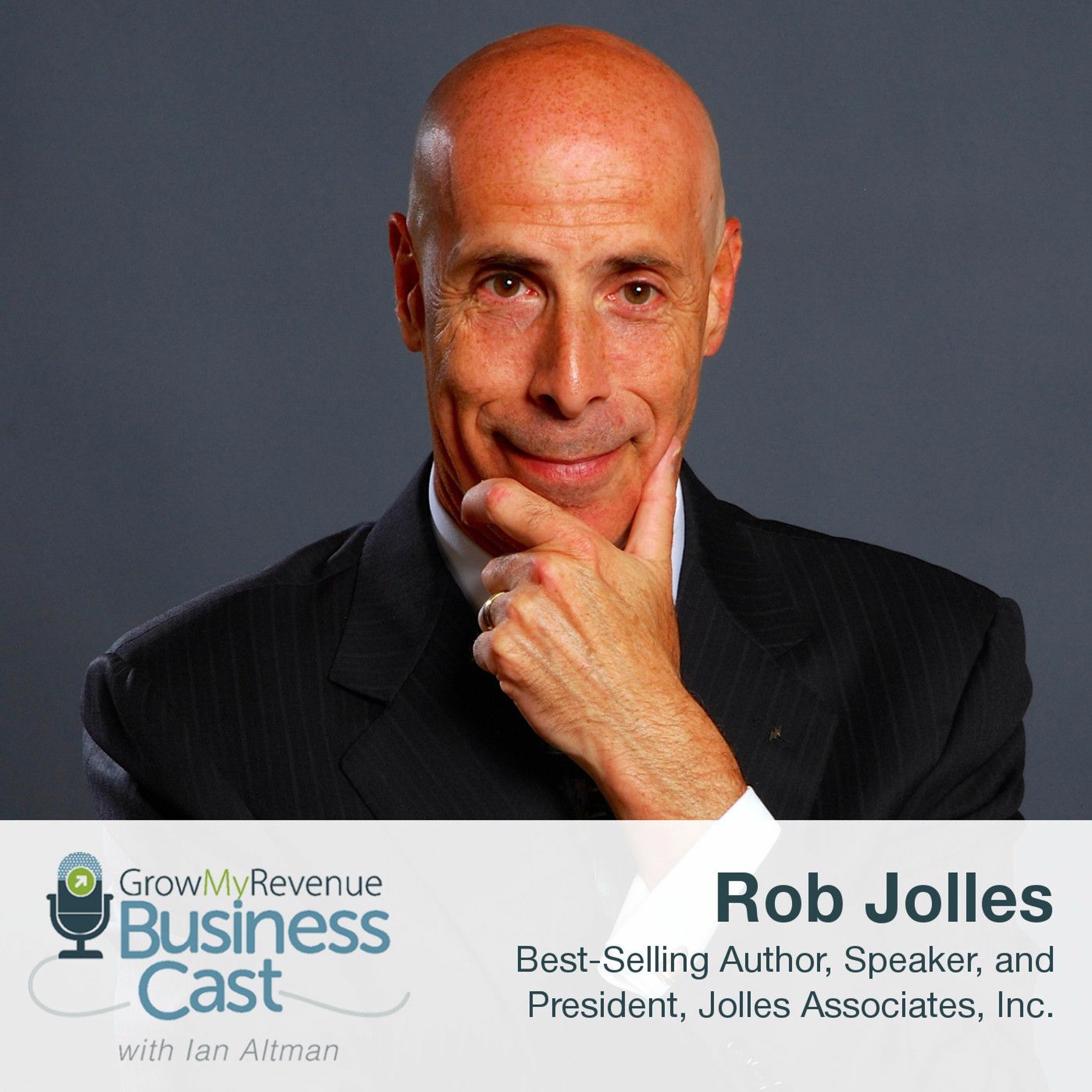
089 Rob Jolles | How To Turn Boring Presentations into Engaging Experiences
 2017-04-30
2017-04-30
Download
Right click and do "save link as"
We all know what it feels like to sit through a lackluster training listening to a disinterested speaker drone on and on about a topic he may know lots about, but just can’t seem to bring to life. On the other hand, we’ve also been witness to presenters who take the most dry, mundane material and make it feel fresh and exciting.
What’s their secret? How do speakers turn average talks into great experiences that leave audiences feeling inspired and energized?
It turns out, great presentation skills can be learned.
My guest today is best-selling author and speaker Rob Jolles. Rob is a former corporate trainer who draws on his 30-plus years of training experience to "teach people how to change minds. His programs on influence and persuasion are in global demand, reaching organizations in North America, Europe, Africa, and the Far East. And in showing clients not just 'how to' but also 'why to,' he stirs individuals and companies to create real, lasting change.”
Rob has developed a proven process that helps presenters lead workshops and seminars, as well as keynote presentations, that are informative, engaging, inspiring and memorable.
Today we’re going to talk specifically about how to run seminars and workshops and the biggest mistakes companies make when it comes to corporate training and presenting.
I know you're going to love this discussion, and you're going to learn a ton from Rob Jolles on this edition of Grow My Revenue!
Listen to this episode and discover:
· Why it’s critical that curriculum developers collaborate with presenters to create engaging and effective trainings.
· Why decision makers need to attend the very trainings they sign-off on.
· What speaker bureaus look for when hiring speakers and presenters.
· Why 15-second sound bites no longer cut it.
· And so much more…
Episode Overview
As a longtime trainer for the Xerox Corporation, Rob Jolles knows the importance of process for delivering workshops and keynotes that are engaging and leave audiences members wanting more. It doesn't matter whether you're presenting to a group of 4 or 40, the principles of great speaking are the same: deliver value that educates and entertains, while letting the audience know that you understand their issues.
From the start, a speaker should let audience members know "What's in it for me?" (often referred to by its acronym ‘WIIFM’), Rob says.
“We don’t know who’s in that little group of seven,” he says. “I always like to throw in a little ‘WIIFM’… and not just, ‘What’s in it for you?’ but maybe how what I’m going to talk about is going to help you on the job, and perhaps help the company you work for.”
In other words, set the audience’s expectations.
More importantly, by having a process you can follow to deliver key ideas and take-aways, a speakers and presenters can monitor what’s working and what’s not.
“When you have a process, you have a way of measuring what you’re doing. When you can measure it, you can fix it. The process that we used was called the UPPOP,” Rob says.
In this episode, we talk about:
· What UPPOP stands for and why it works.
· How to prime audience members for ‘the ask.’
· What all decision makers need to do when booking speakers or trainers.
· Why blaming the audience for inattention is a bad idea.
· Tools the best speakers use in their presentations.
· The biggest mistake presenters make when preparing their presentations.
“At the end of the day, it isn’t about all the information that you crammed in,” Rob says. “It’s people finishing that presentation and going: ‘You know, I like that CEO. I like that guy in accounting, and I love working here, and I want to do what they just asked me to do.’”
Tune in for all of these nuggets of wisdom, and more, on today's Grow My Revenue with Rob Jolles.
For full show notes and other resources, please visit: http://www.ianaltman.com/podcast/rob-jolles/
view more
More Episodes
194 | The Decision Maker Myth, Skip Miller
 2019-05-11
2019-05-11
 2019-05-11
2019-05-11
189 | Selling From The Heart | Larry Levine
 2019-04-06
2019-04-06
 2019-04-06
2019-04-06
186 | Think Like Your Customer, Bob London
 2019-03-17
2019-03-17
 2019-03-17
2019-03-17
181 | Sales Differentiation, Lee Salz
 2019-02-10
2019-02-10
 2019-02-10
2019-02-10
012345678910111213141516171819
Create your
podcast in
minutes
- Full-featured podcast site
- Unlimited storage and bandwidth
- Comprehensive podcast stats
- Distribute to Apple Podcasts, Spotify, and more
- Make money with your podcast
It is Free
- Privacy Policy
- Cookie Policy
- Terms of Use
- Consent Preferences
- Copyright © 2015-2024 Podbean.com





